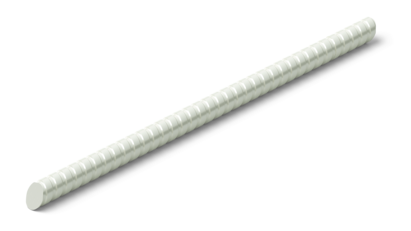Villa Neo

Three sculptural V-pillars support the elongated, heavy upper floor (Photo: Frank Löschke / LIQUID PHOTOGRAPHY)

The Schöck Isolink® made of glass fiber composite material was used to fix the facade (Photo: Frank Löschke / LIQUID PHOTOGRAPHY)

The Villa Neo was implemented in rough-sawn in-situ concrete (Photo: Frank Löschke / LIQUID PHOTOGRAPHY)

The villa was built on a 3,000 square meter woodland (Photo: Frank Löschke / LIQUID PHOTOGRAPHY)
A 3,000 square meter woodland in a Hamburg suburb was the starting point for the design of the Villa Neo. Which material can deal with the topic of forest, moss, moisture? Querkopf Architects' answer was concrete. This extraordinary project was implemented with concrete cast in-situ. The patina which will cover the facade over the years is a desired effect. Because the forest should be reflected in the building. For the first time in Germany, the Schöck Isolink® types C-EH and C-ED were used in combination with in-situ concrete on the construction site. Isolink® - the thermally separating facade fastening for core-insulated concrete walls - was used to avoid thermal bridges.
The concrete body of the villa weighing around 400 tons lies on three V-supports. The V-supports each had to be welded into the structure by a special company and stabilized with solid iron on the inside. The supports bear the entire load of the concrete body and the solid iron prevents fluctuations. In order to create the sculptural effect of the building, which looks as if it were cast in one piece, the walls could not be manufactured in the precast plant, but were made in in-situ concrete. That is why the statics of the building are designed so that there are no expansion joints on the facade. The facade fastening with the Schöck Isolink® made of glass fiber composite material was also processed directly on the construction site and was not previously used in the precast plant as usual.
Fionn Mögel by Querkopf Architekten GmbH & Co. KG, Hamburg, explains: “Due to the proximity to the forest, moisture and moss on the facade are of course an important issue. We wanted to develop an object that can handle this natural process and age gracefully. A white, cleaned surface would be far too fragile and labor intensive, so concrete was the only alternative for us. ” In order to make the concrete look appear striking, the architects opted for rough sawn board formwork.
The Schöck Isolink® was used to ensure that this construction lasts and defies the effects of the weather As a certified passive house component, the Schöck Isolink® ensures reliable thermal separation in core-insulated concrete facades and thus reduces thermal bridges to a minimum.
Querkopf Architects, Hamburg
BIBO reinforced concrete construction, Hamburg


